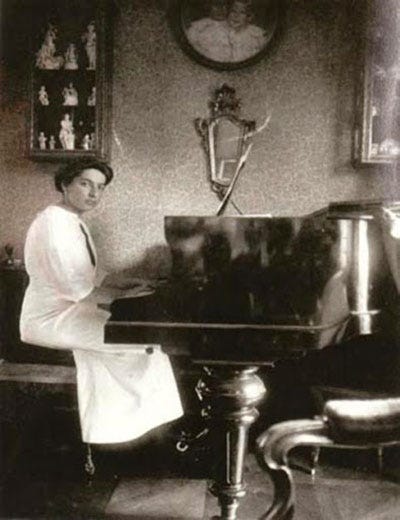Dora Pejačević (1885–1923) was a trailblazer in Croatian music and one of the first women from the region to make a lasting mark as a composer. Born into an aristocratic family in Budapest, she grew up surrounded by culture, privilege, and expectation. But Dora was never content to remain just a “countess.” Instead, she used her talent and curiosity to become one of Croatia’s most significant early 20th-century composers.
Pejačević composed over 50 works in her short life, spanning orchestral music, chamber works, songs, and piano pieces. Her music bridges late Romanticism and early modernism, with echoes of Brahms and Strauss. The piano was central to her creativity. Works like her Piano Sonata in A-flat Major, Op. 57 reveal her technical command and expressive depth.
She also left behind miniatures like Life of Flowers (Blumenleben), Op. 19, a cycle of nature-inspired pieces.
Her piano writing is rich, emotional, and pianistically rewarding, making it a fantastic discovery for performers seeking repertoire beyond the standard canon.
Pejačević lived during turbulent times in European history. Unlike many aristocrats, she actively engaged in intellectual and artistic circles, leaving behind not just music but also a legacy of courage and independence.For decades, her music was overlooked, but in recent years it has found new audiences. Performances and recordings of her piano works and orchestral music have grown steadily, especially around the 100th anniversary of her death in 2023.
Dora Pejačević broke barriers, not only as a woman in a male-dominated field but also as a countess who chose art over convention. Her piano music is expressive, powerful, and imaginative, offering us pianists repertoire that bridges Romantic tradition and early modernist sensibilities.

Comments
Post a Comment